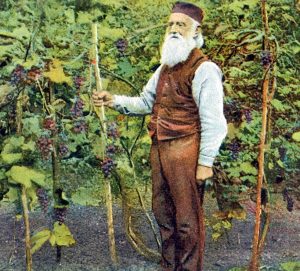The style of book binding above with mottled leather is called Cat’s Paw, appearing to have had little inked feline foot pads walk over its covers. But no, this more »
Tag: Dibner Library of the History of Science and Technology
When Smithsonian Libraries’ material is placed on exhibition, all selected objects are reviewed for display. In some cases, conservation treatment is required in order to make it possible for a book to be opened and pages turned without damaging the structure. Other factors such as conditions for temperature, relative humidity, and light levels in the exhibition gallery are reviewed before allowing items to be exhibited for any length of time. The Dibner Library’s large and important volume of John William Norie’s Marine atlas is the centerpiece of an upcoming exhibition at the National Museum of American History – and was subject to the required conservation review.
The Sailing Club of the Chesapeake, to commemorate the American Bicentennial, invited members of England’s Royal Yachting Association to journey to the Eastern Seaboard for the “No Hard Feelings Cruise.” Sixty-two British sailors took up the offer, and with more than 300 others, embarked on eighty-nine yachts to race and explore the waters of the Chesapeake Bay in 1976.
Want more creepy skeletons? Join us for a live Periscope tour on Thursday, October 29th at 1pm!
Halloween is quickly approaching and with it come the traditional decorations of bats, pumpkins, ghosts and of course, skeletons. Back in the 1500’s, one man changed the way the medical world saw the skeletal and muscular systems of the human body. That man, Andreas Vesalius, illustrated anatomical features in his De humani corporis fabrica (On the structure of the human body) in a way never before seen. Although the pages below may seem pretty gruesome they come from one of the most influential anatomy books of all time.

Now that the season for harvesting grapes in New England is here, let’s raise a glass to Ephraim Bull, the originator of the all-time popular grape in America, the Concord. Readily associated with juice and jelly and long out of favor in viticulture, Concord grape is having a bit of resurgence with the interest in DIY home brewing and fermenting. If faced with an abundance of the easily grown grape on one’s garden fence or arbor, recipes and techniques for bottling your own wine are found in many online guides. For full appreciation, a toast to Bull, his grape and their faded wine history is in order.
Familiar with its waters, I was delighted when an early chart of the Chesapeake Bay, entitled Map of part of Virginia, Maryland, and Delaware of 1861, appeared in my cataloging queue. But then who doesn’t like looking at old maps? Getting absorbed in what is fanciful, long-gone or merely changed, and finding remnants of the well-known from a long association with the landscape. And reading any map on paper doesn’t happen every day now, let alone a very rare one.




